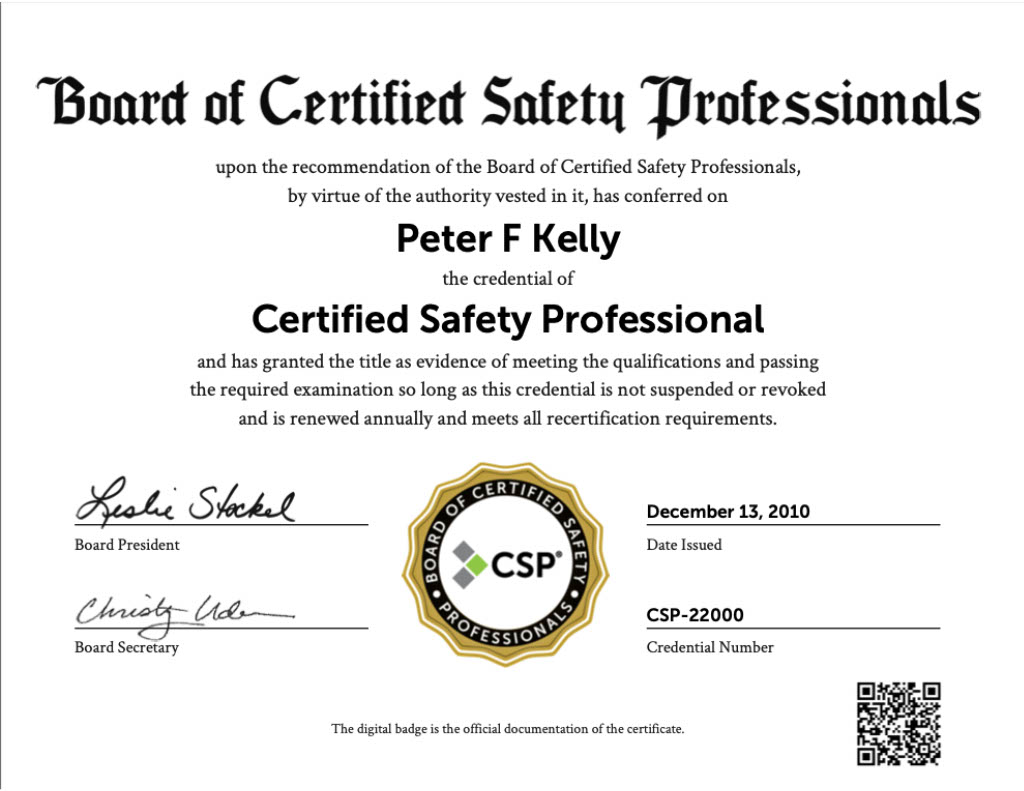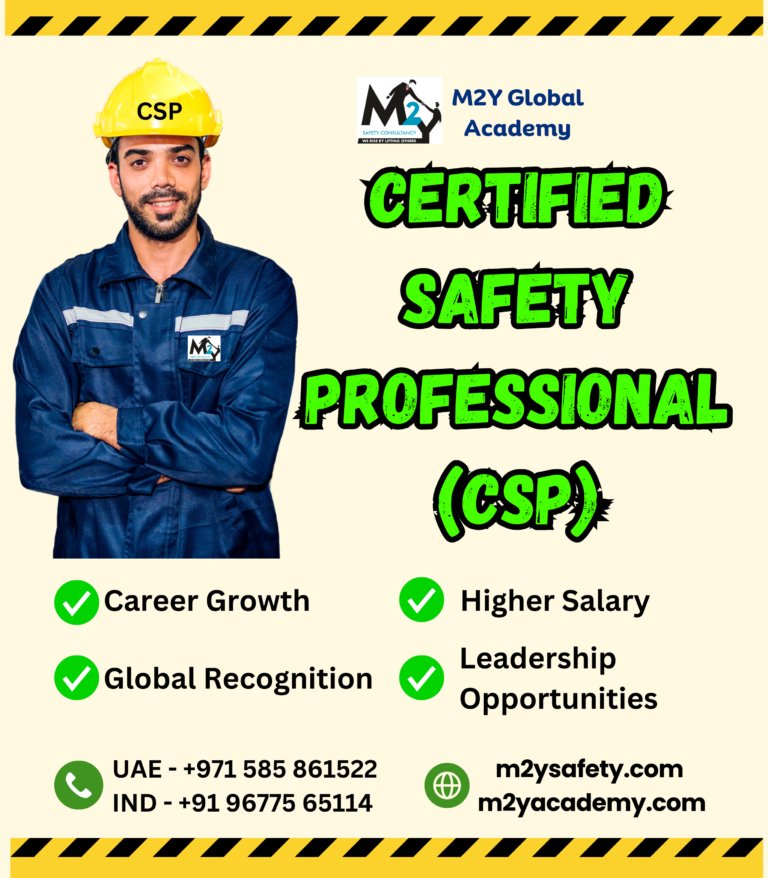Become A Certified Safety Professional (CSP) Today!
An individual recognized within the safety industry for demonstrating competency and knowledge in safety practices and principles often holds a specific credential. This recognition signifies a commitment to upholding standards designed to protect workers, the public, and the environment from hazards. For example, professionals in construction, manufacturing, and healthcare frequently pursue this advanced standing to enhance their expertise.
Possessing this distinction can offer several advantages, including improved career prospects, increased earning potential, and enhanced credibility within an organization. Furthermore, it reflects a dedication to continuous professional development and staying current with evolving safety regulations and best practices. The rise in prominence of this role mirrors a broader societal emphasis on workplace safety and risk management.
The following sections will delve into the requirements for achieving this level of professional recognition, the responsibilities assumed by these individuals, and the continuing education necessary to maintain certification. Examination preparation resources and the impact of technological advancements on this field will also be explored.
- Sharon Case Net Worth Husband Married Children
- Young Thug S Children Know Them All
- Chelsea Gibb Biography Age Height Husband Net
- Casey Burke Bio Age Wiki Facts And
- Meet The Late Ray Liotta S Daughter
Frequently Asked Questions
This section addresses common inquiries regarding the professional designation signifying a high level of competence in safety practices.
Question 1: What are the primary eligibility requirements to pursue this certification?
Eligibility typically involves a combination of formal education, professional safety experience, and successful completion of a comprehensive examination. Specific requirements vary depending on the certifying organization, but a bachelor's degree and several years of safety-related experience are generally prerequisites.
- Who Is Austin Hahn Indiana Man Apprehended
- Kyle Brown Wife Megan And Four Kids
- Joe Barry Net Worth Is He Really
- Nico Parker Bio Age Career Height Single
- Bishop Briggs Husband Did Not Propose Her
Question 2: What topics are covered in the certification examination?
The examination assesses knowledge across a broad range of safety disciplines, including hazard recognition, risk assessment, regulatory compliance, safety management systems, and training methodologies. A thorough understanding of these areas is essential for success.
Question 3: How does holding this certification benefit an organization?
Organizations benefit from having these individuals on staff through improved safety performance, reduced incident rates, enhanced regulatory compliance, and a strengthened safety culture. The expertise contributes to a safer working environment and mitigates potential liabilities.
Question 4: What are the typical job responsibilities of a professional holding this certification?
Responsibilities include developing and implementing safety programs, conducting workplace inspections, investigating incidents, providing safety training, ensuring compliance with relevant regulations, and managing safety-related documentation.
Question 5: Is continuing education required to maintain this certification?
Yes, maintaining this certification typically requires ongoing professional development activities, such as attending conferences, completing coursework, or participating in other educational opportunities. This ensures that certified individuals remain current with evolving safety standards and practices.
Question 6: How does this certification differ from other safety-related credentials?
This particular certification is often considered a benchmark within the safety profession, requiring a higher level of education, experience, and demonstrated competence compared to some other certifications. The rigorous requirements contribute to its widespread recognition and credibility.
In summary, pursuing and maintaining this certification reflects a commitment to excellence in the field of safety. The resulting benefits extend to both the individual professional and the organizations they serve.
The subsequent sections will explore the specific responsibilities and duties typically associated with this role in greater detail.
Guidance for Aspiring and Current Professionals
This section provides essential guidance for individuals seeking to achieve or maintain competence in safety management. The focus is on practical strategies and insights derived from industry best practices.
Tip 1: Prioritize Continuing Education: Maintaining expertise necessitates a commitment to lifelong learning. Actively participate in professional development opportunities such as conferences, workshops, and specialized training programs. This ensures currency with evolving regulations and best practices.
Tip 2: Develop Strong Communication Skills: Effectively conveying safety information is paramount. Hone both written and verbal communication skills to clearly articulate risks, procedures, and training materials to diverse audiences within an organization.
Tip 3: Master Risk Assessment Techniques: Proficiency in identifying and evaluating workplace hazards is fundamental. Familiarize oneself with various risk assessment methodologies, such as hazard analysis, failure mode and effects analysis (FMEA), and job safety analysis (JSA), to proactively mitigate potential incidents.
Tip 4: Cultivate a Proactive Safety Culture: Advocate for a workplace environment where safety is valued and prioritized at all levels. Encourage employee participation in safety initiatives, promote open communication regarding hazards, and consistently reinforce safe work practices.
Tip 5: Stay Informed About Regulatory Changes: Continuously monitor and interpret changes in relevant safety regulations and standards. Develop a system for disseminating this information to affected personnel and ensure organizational compliance.
Tip 6: Embrace Technology: Leverage technological advancements to enhance safety management practices. Explore the use of software applications for hazard tracking, incident reporting, safety training, and data analysis to improve efficiency and effectiveness.
Tip 7: Seek Mentorship: Engage with experienced professionals in the safety field to gain valuable insights and guidance. Mentorship provides opportunities for knowledge sharing, skill development, and career advancement.
Successful navigation of the safety landscape demands continuous learning, proactive engagement, and a dedication to upholding the highest standards of professional conduct. The benefits of this approach include improved workplace safety, reduced incident rates, and enhanced organizational reputation.
The concluding section will summarize the key takeaways and emphasize the ongoing importance of this critical role in safeguarding workers and the environment.
Conclusion
This article has provided an overview of the role of a certified safety professional, encompassing the required qualifications, responsibilities, and continued professional development. The importance of this credential within the safety industry has been highlighted, emphasizing its contribution to enhanced workplace safety, regulatory compliance, and risk management.
The demand for qualified safety professionals will likely continue to grow due to increasing regulatory scrutiny and a heightened awareness of the importance of workplace safety. Maintaining the integrity of this certification remains crucial for ensuring that individuals entrusted with the safety and well-being of others possess the necessary knowledge and skills. Organizations should actively support the professional development of their safety personnel and recognize the value of this expertise in safeguarding their workforce and assets.
- Carolin Bacic Celebrity Wife Wiki Age Height
- Here S How Much Mia Farrow Is
- Who Are Pharrell Williams Parents Meet Pharoah
- Chuck Todd And Wife Kristian Todd Married
- Xochitl Gomez Siblings Does She Have Any

Learn More About the Safety Geek About Me The Safety Geek

Service Certified Safety Systems

Certified Safety Professional Certification Online (CSP)